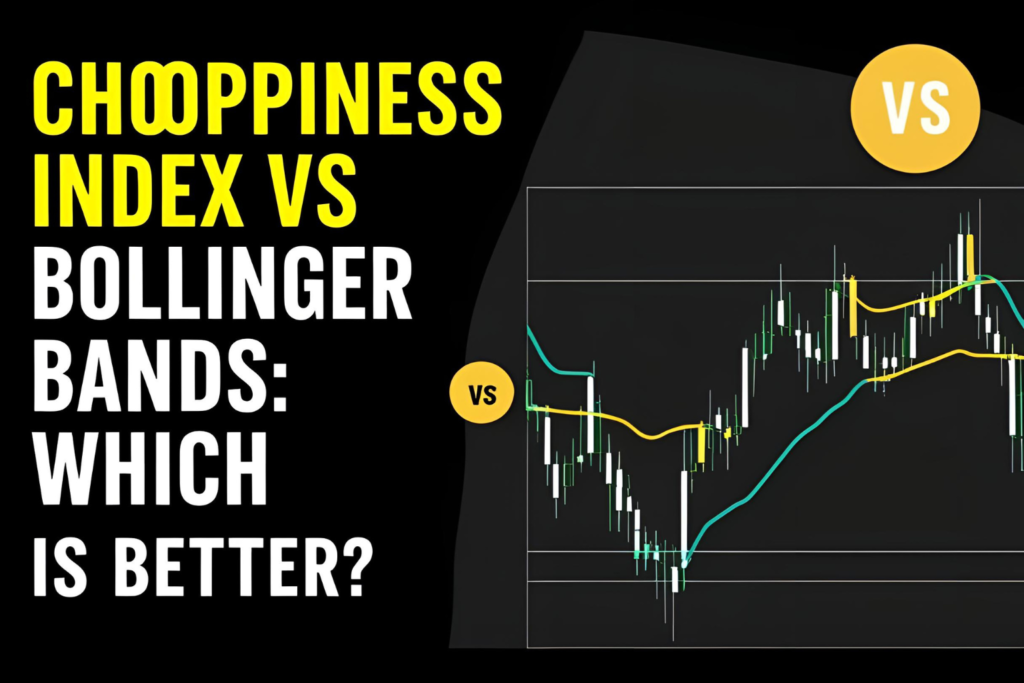Introduction
Technical traders use various tools to understand market structure and volatility. Two popular options are the Choppiness Index and Bollinger Bands. While they may seem similar, they serve different purposes. This comparison will help you decide which is better for your strategy—or how to use both together.
Purpose of Each Indicator
| Indicator | Main Use |
|---|---|
| Choppiness Index | Measures if the market is trending or ranging |
| Bollinger Bands | Measures price volatility and extremes |
How They Work
Choppiness Index:
- Outputs a value from 0 to 100
- Values above 61.8 = choppy/ranging market
- Values below 38.2 = strong trending market
Bollinger Bands:
- Plots upper and lower bands around a moving average
- Bands widen in high volatility and contract in low volatility
- Often used for mean reversion or breakout signals
When to Use Each
| Scenario | Best Tool |
|---|---|
| Identifying sideways markets | Choppiness Index |
| Spotting price extremes | Bollinger Bands |
| Breakout trading confirmation | Use both together |
| Measuring overall volatility | Bollinger Bands |
| Strategy selection (trend vs range) | Choppiness Index |
Using Both Together: A Strategy Example
Setup:
- Choppiness Index (14)
- Bollinger Bands (20, 2)
- 15-min or 1H chart
Entry Rule:
- Choppiness Index drops below 38.2 (trend likely starting)
- Price breaks above or below Bollinger Bands with volume confirmation
→ Take trade in the breakout direction
Exit Rule:
- Price returns inside Bollinger Bands
- CI rises above 50 (trend may be fading)
Pros and Cons Comparison
| Feature | Choppiness Index | Bollinger Bands |
|---|---|---|
| Trend strength | ✅ | ❌ |
| Price direction | ❌ | ❌ (can imply extremes) |
| Volatility analysis | ⚠ Limited | ✅ |
| Entry/exit signal | ❌ | ✅ (with price action) |
| Ideal for trend filtering | ✅ | ⚠ Sometimes misleading |
FAQs
1. Can I use Choppiness Index and Bollinger Bands together?
Yes, combining both helps confirm whether a breakout is likely to succeed or fail.
2. Which is better for trend trading?
The Choppiness Index helps detect trend conditions more effectively.
3. Do Bollinger Bands work for trend reversals?
Yes, especially when combined with divergence or volume confirmation.
4. Is either indicator better for scalping?
Bollinger Bands are more responsive on lower timeframes, but Choppiness can help filter range phases.
5. Which is easier for beginners?
Bollinger Bands may be more intuitive visually, but both are easy to understand with practice.
